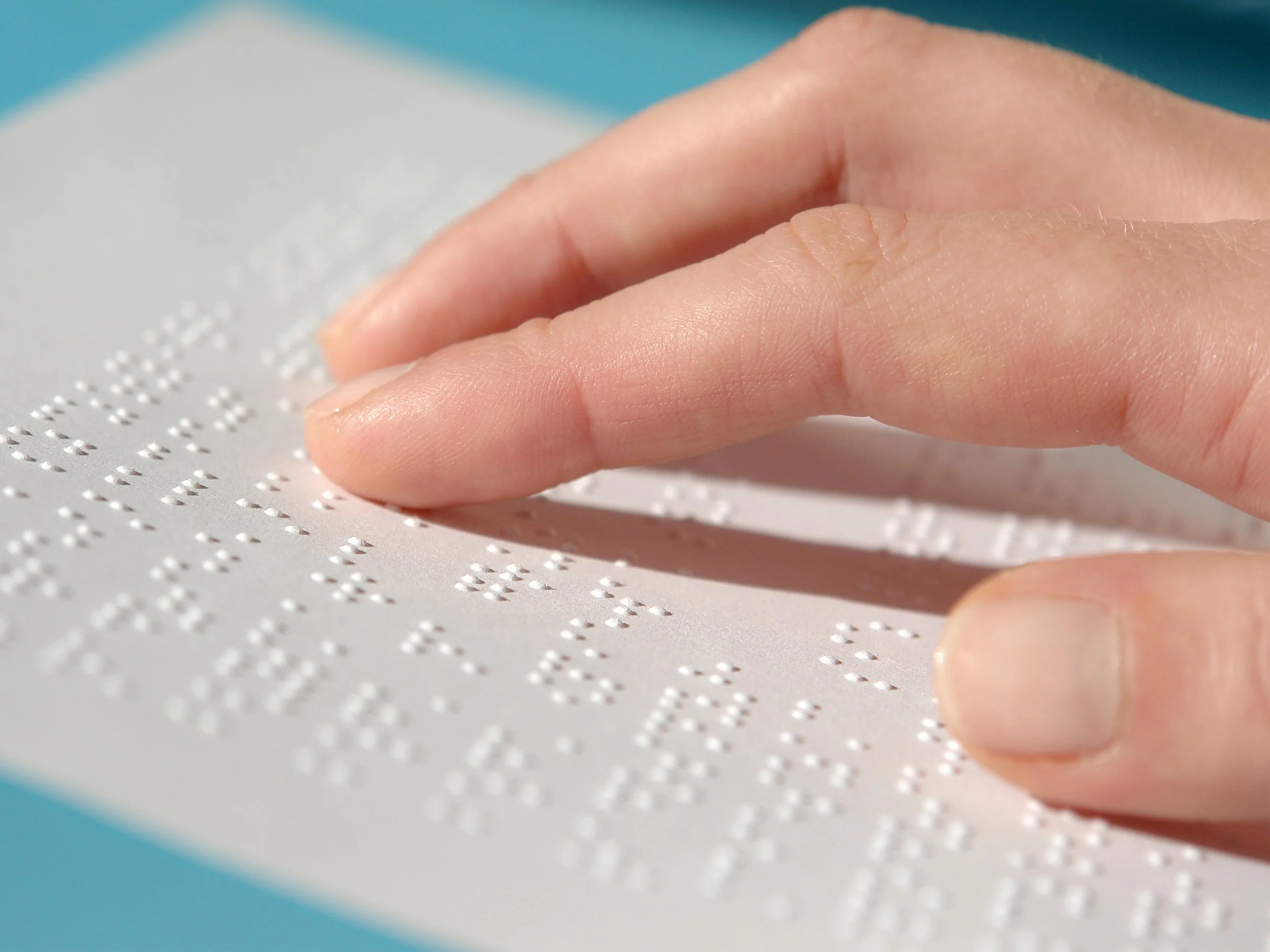Haptic Mouse
Project Summary
Graphical information is incredibly powerful. We use graphical representations to help us make sense of data, computer aided design allows us to experiment with an idea of a physical object and create a visual representation of the object, pictures evoke emotion and memories, and especially in educational contexts doodling, taking visual notes, and visual experimentation are vital toils that have been shown to enhance learning, engagement, recall, and reasoning.
Fingers on braille. (Courtesy Adobe Stock)
Currently, there is a very real challenge in accessibility and equity for blind and visually impaired students due to the lack of tools for graphical representations designed with their needs in mind. Current braille displays, e-readers, and tactile graphics are a poor substitute for the tools other students receive since they are costly and cannot fully represent all the information contained in a graphic. More importantly, these tools do not allow blind and visually impaired students to experiment and craft their own learning. These students must be content with just being “receivers” of information and almost never creators.
Imagine learning about parabolas, someone handing you a static representation of one which you can feel, explaining it to you, and that’s it. You never get to modify it yourself, play around with its parameters and feel the changes that the equation makes in the graphic. Would you really have been able to understand the relationship between any equation and the influence that its parameters have on its properties? Or what about physics? Would you really have been able to understand forces, or magnetics without you, yourself, solving some problems in which you played with equations and experienced the results?
Man reading Braille. (Courtesy Adobe Stock)
Living in a society that fails to provide adequate support for people with visual impairments has adverse effects on life trajectories. Visually impaired students are less likely to be provided with sufficient support to perform at the same levels as their sighted peers. This leads to poorer academic performance. Science subjects rely on heavily visual material. Many educators do not know how to alter science lessons to accommodate the needs of students with visual impairments. This results in these students not receiving the adequate instruction needed to perform well. In one study, out of 69% of blind students who found science interesting, 8% said they would seek a degree in the sciences in college. This study also showed that the lack of hands-on experiences in STEM fields afforded to blind people lead to lower belief in their capability to succeed in these areas.
We propose to create a haptic mouse: an accessible tool that will enable teachers for the visually impaired as well as blind and low vision students to be creators of graphic content. We want to enable teachers and students to create content that is equitable for blind and low vision students and allow students to also experiment with that content and take agency in their own learning.
We currently have the support of the Allegheny Intermediate Unit directorate specializing in hearing, vision and communication access, as well as five different Teachers of the Visually Impaired who are willing to work with us and to co-create this tool.
This project is in its infancy. Our plan for the first year is to develop a prototype with the help of teachers. In subsequent years we wish to use the tool to engage the blind and low vision community and modify it and re-design it to fit their needs as well as support teachers in creating content.
Committee Members
Catherine Getchell
Marissa Vogel
Carol Wooten
Holly Dick
Melisa Martinez
Aaron Steinfeld
Rachel Burcin
Paul Dille



